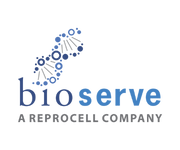Next-Generation Sequencing (NGS) is massively parallel, per run simultaneously sequencing millions of fragments. This high-throughput approach converts at one time into hundreds to thousands of genes being sequenced. NGS also provides greater discovery ability with deep sequencing to identify novel or unusual variants. Bioserve offers an end-to-end solution for Next-Generation Sequencing as a service for a wide range of sample types including DNA and RNA. It uses multiple sequencing platforms including Illumina NextSeq 500, HiSeq, MiSeq, PacBio Sequel, and Oxford Nanopore Technology to achieve this. Our team of scientists and Bioinformaticians work with you to deliver reliable high-quality results from any type of source with limited nucleic acids. We provide end-to-end solutions for your NGS project needs.
